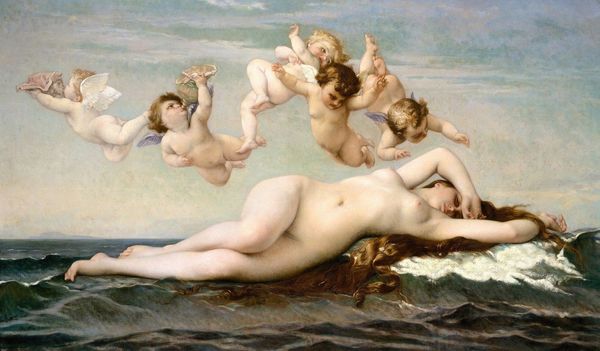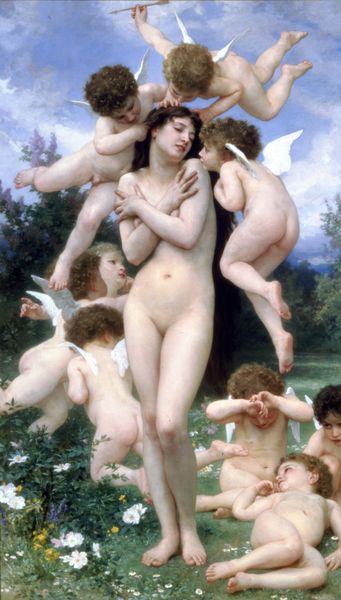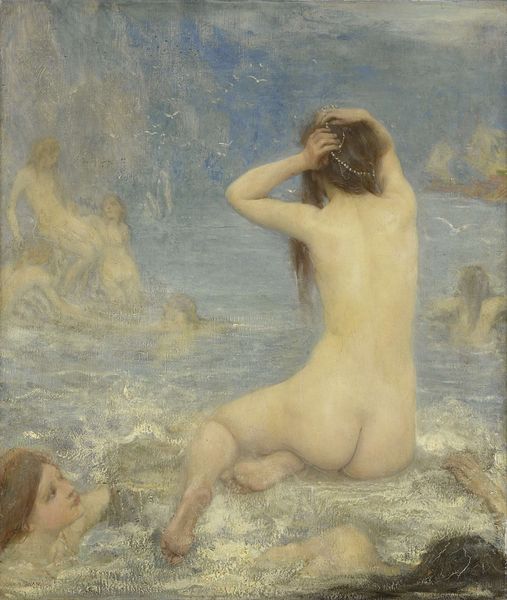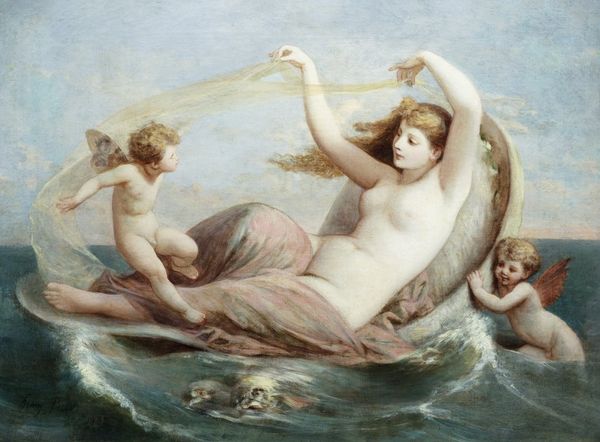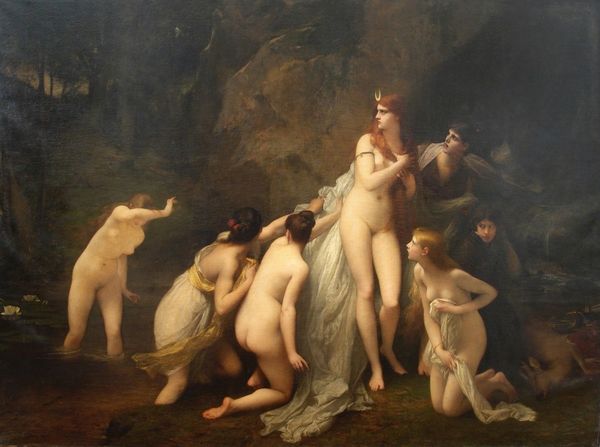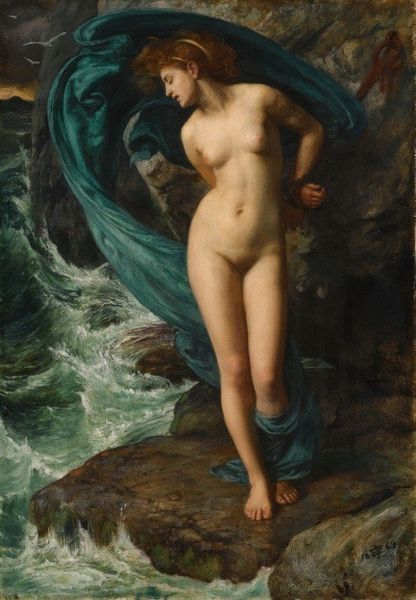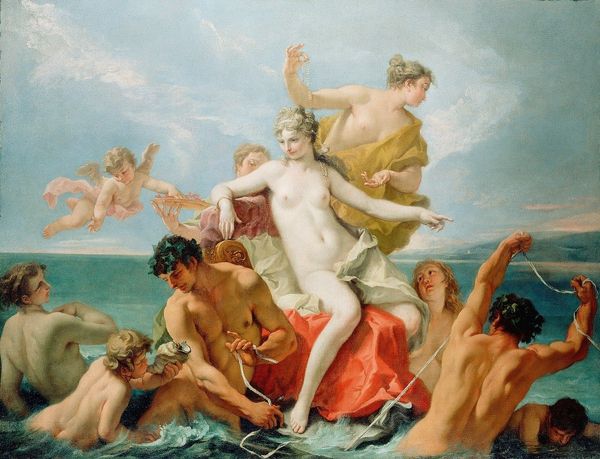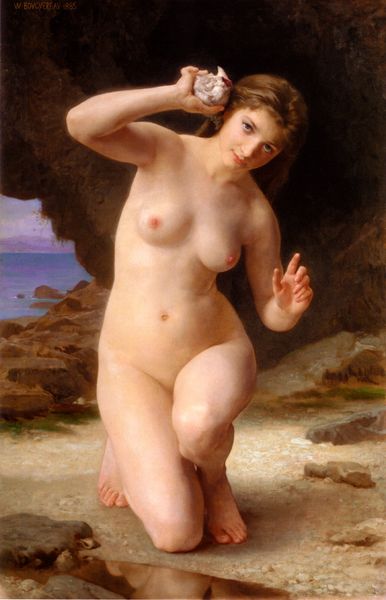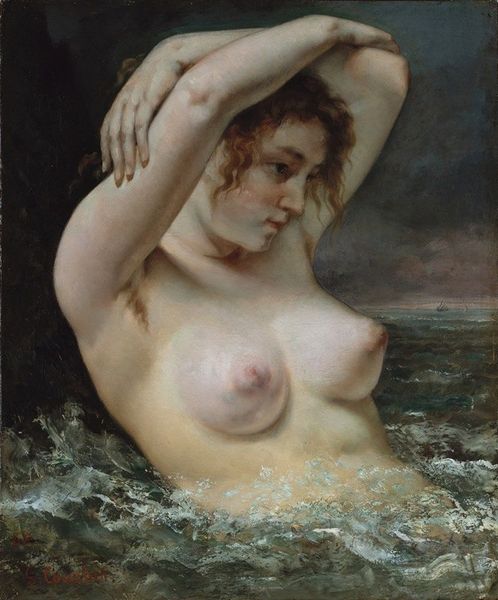
Copyright: Public Domain: Artvee
Curator: Bouguereau's 1879 oil painting, "The Birth of Venus," immerses us in a mythological scene with meticulous detail and luminous textures. What are your initial impressions? Editor: Visually, it's an avalanche of rosy flesh tones and soft, blurry edges. All these cherubic figures feel quite…dreamlike, yet distant from contemporary social realities. Curator: Indeed. Bouguereau, rooted in academic art traditions, showcases his mastery of representing the human form, the smooth application of paint, almost erasing the handmade labor behind it all, focusing on Venus’ idealized beauty emerging from the sea, a theme frequently depicted throughout art history. How does its classical allegorical presentation relate to the socio-political backdrop of the late 19th century? Editor: It's fascinating, because amidst industrial revolution and nascent feminist movements, we have this return to classical myth, a sort of retreat to idealised forms as a rejection, perhaps, of the evolving role of women. The painting then becomes a kind of reinforcement of traditional beauty standards and gender roles, draped in mythological clothing, made for an audience that would've debated the merit of Courbet’s nudes. The question arises, how does this mythological "birth" function ideologically? Curator: That’s a keen insight. Looking closely at the material aspects of its creation, one can appreciate Bouguereau's skilled application of paint layers and the crafting of this elaborate fiction. These highly valued skills also translate into very tangible social and economic power that granted artists like Bouguereau access to the elite salons of Paris. This is academic painting as high craft and a highly exclusive market commodity. Editor: Absolutely. And those artistic choices—the softness, the almost airbrushed finish—are deliberate constructions reinforcing the palatable imagery aligned with patriarchal expectations. The gaze here isn’t neutral; it’s defining, limiting, and shaping what is deemed desirable. Looking at art history, the creation of the naked form serves power relations, the construction of societal aesthetics. Curator: An incredibly nuanced reading, examining this mythological subject matter to interrogate constructions of beauty and gender within this historical period and to recognize how materiality itself becomes implicated in systems of valuation and power. Editor: Ultimately, viewing “The Birth of Venus” invites critical questions about representation, desire, and the ongoing power dynamics shaped by visual culture.
Comments
No comments
Be the first to comment and join the conversation on the ultimate creative platform.
